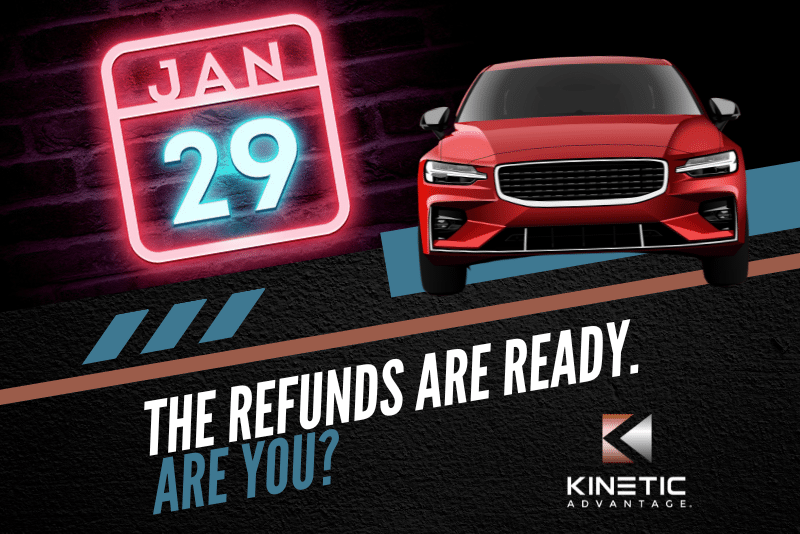The automotive sector’s recovery from the COVID-19 pandemic in 2020 is one of the best economic drivers with activity above pre-pandemic levels in the first quarter of 2021. Reaching over 23 % higher than they were at the end of 2019, the used car market boom has become a seller’s market with higher-than-average gross profits, unprecedented turn-times and buyers’ online searches doubling over the course of this year.
Still, there is a silver lining for buyers; their trades will never be worth more than they are now. Those who bought a new car and were feeling a little buyer’s remorse can rest assured, as depreciation for used car inventory is at an all-time low for vehicles 1-3 years old.
It was just a year ago that we thought the market would crash as credit tightened up, rental companies liquidated inventory and toilet paper…well, good luck finding that. The market was in a panic to the point of driving 0% rates for 72 months, deferred payments and a round of stimulus checks for everyone. Urban communities produced many first-time buyers in the market as safety concerns for using public transportation grew. Electric cars, now closely matching inventory with their fossil fueled counterparts in price, were their own ripple with a 200-300 mile-per-charge unit.
Then, we look at the economic factors that have elevated car prices and continue pushing inflation; chip shortages, extended unemployment benefits, another round of stimulus checks, consumer savings hitting record levels for larger down payments, and rental car fleets buying in the 1-3-year-old market. All these events pushed record wholesale prices even further, as independent dealers are now not only competing amongst themselves, but also with larger, deeper pocket organizations with more resources.
Word on the street is OEMs are going to be flooding the market with new inventory in the coming months. While some market reports state a used car crash is coming soon, others state it will remain strong and steady. We are at a pinnacle moment in time where a perfect storm has created a market that no one has or could predict. How do you forecast what we have never experienced in the past? Historical data usually guides us through these market fluctuations, so we tend to refer to pre-pandemic times instead of looking at how the pandemic created this new market environment.
With all that is going on and everyone searching for a positive or preparing for a negative outcome, we must look at some of the data to ensure we don’t get too far ahead of ourselves. Typically, as summer months approach, we see a slight dip in valuation. As expected, however, SUVs and truck valuations are still outperforming all other segments. Inventory prices are still climbing, just not at an elevated rate. Consumers are still making purchases at record levels. New car inventory will hit the market, but there is no quick solution to solving the chip crisis.

Despite all these anomalies that have many talking about large pendulum swings of highs and lows, this industry has been and still is very resilient to tough times. As we notice the complications and unknowns within the market, it is best to focus on what we can control rather than what we cannot.
The controllable factors have prepared extremely successful dealers to make better decisions within their dealerships by focusing on key areas that drive the business in good or potentially bad times.
A few key areas we should be focusing on in the coming months are dealer operations and controlling working capital. If we look back at dealer operations, our processes have relatively stayed the same from inventory acquisition to the point of sale. The main differentiator is that we are further pushed to a virtual environment in comparison to kicking the tires at auction or consumer presence within a dealership.
Compared to the past, capital requirements for technology have not really changed, but the price of the inventory has drastically increased. Plainly put, consumers who used to not mind spending time in a dealership to negotiate and achieve max profitability, now want to spend as much time there as they do at a drive thru. This poses a challenge for dealers to make smarter investments to achieve the number of sales they want.
Buyers will pay for the right unit and are willing to travel to get it. This tells us the focus should be on expanding your virtual presence with an emphasis on maximizing your per unit gross profit. In this virtual world, the market grows exponentially as technology expands reach to link consumers and inventory with a seamless online process. With the stakes being higher than ever, it is crucial for dealers to diversify their capital within the dealership to maximize profitability.
Investing in inventory alone is no longer the driving force to achieve those numbers, but the investment into various profit centers will improve profitability per unit. Both diversification of capital and pairing the right unit with the right buyer in a virtual marketplace have become the new norm in staying ahead of the competition. Controlling working capital has always been something of a struggle for dealerships, as there is a huge cost to operate in comparison to minimal net margins.
There are two main controls in working capital that are imperative to focus on: physical assets and cash equivalent controls. Both are equally important to capitalize on max profitability.
Physical assets, or inventory, are the largest control variable. We erroneously think more cars equals more sales, but the pandemic has showed us that it’s not the number of units you have on your lot, but rather how fast they sell and provide a return on investment. This control not only cuts holding costs, which increases profit per unit, but ensures that each unit is treated as its own profit center. Cash equivalent is contracts in transit, accounts receivables, loans and time.
We often get far too caught up in focusing on sales metrics and fail to realize the expense of the main control. Deal desking, broken F&I processes, and ride and drive prior to all stipulations being met are time killers that eat into each individual unit’s profitability. The purpose is to control what you can through diversification and perfection.
Solid processes keep dealerships healthy and weather long-term turmoil within the industry.
What Drives You?
What Drives You?
The dealership floorplanning newsletter that takes a look into recent floorplan news & trends, as well as updates from inside the walls at Kinetic Advantage.
(We promise not to spam you or inundate your inbox with emails. Our newsletter goes out roughly twice per month to include important news and information around dealer floorplanning.)





